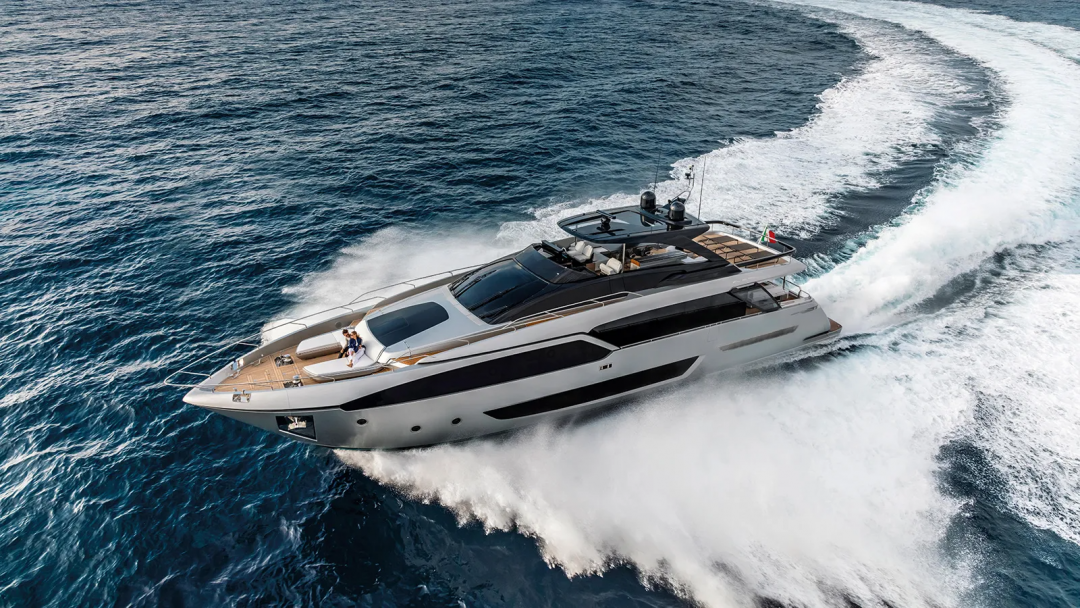
To really appreciate any Riva, especially the recently released 90′ Argo, one must get a bird’s-eye view of these boats. This is how the ship’s designer, Mauro Micheli, sees it, and the first drawing he presented the shipyard was of the ship as seen from a helicopter. One of the things you would notice about the new Riva if you were to observe it from that angle is that the sizable glass panel that was integrated into the hardtop has an uneven design. According to Stefano de Vivo, the Ferretti Group’s chief business officer, this single item is also “quite pricey.”
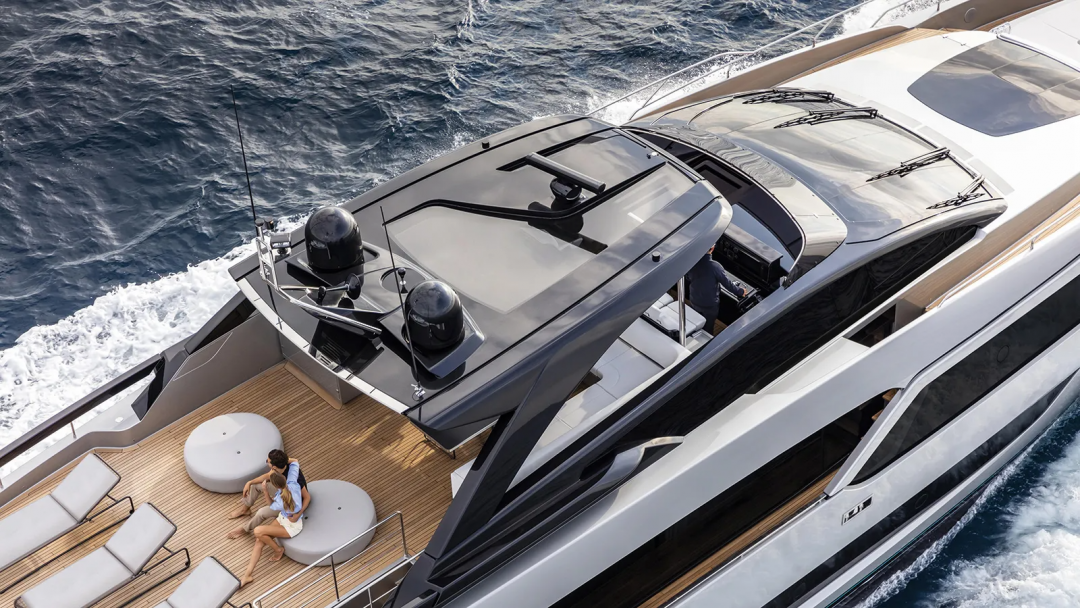
The Riva hardtop’s asymmetrical glass insert is reminiscent of abstract art
Sergio Beretta, who co-founded Officina Italiana Design with Micheli, connects the work to abstract design. “It’s like an abstract design,” he describes it. “Our primary passion is contemporary art,” he says, “and so we wanted to give something special, something more contemporary for this boat,” which is how they discovered this asymmetric cut glass. It is housed within the hardtop that shields a large amount of the 46-square-meter bridge, one of the main highlights of this elegant yacht that is less than 30 meters long. This asymmetric top has already been seen on the Argo’s larger sistership, the Riva Dolcevita, which measures 33.5 meters.
The Argo, with 28.5 meters in length, is the third and smallest of Riva’s new-generation flybridge yachts; yet, as Micheli puts it, “it’s a strong design.” The name “Argo” was inspired by the Greek legend of the Argonauts and the Golden Fleece.
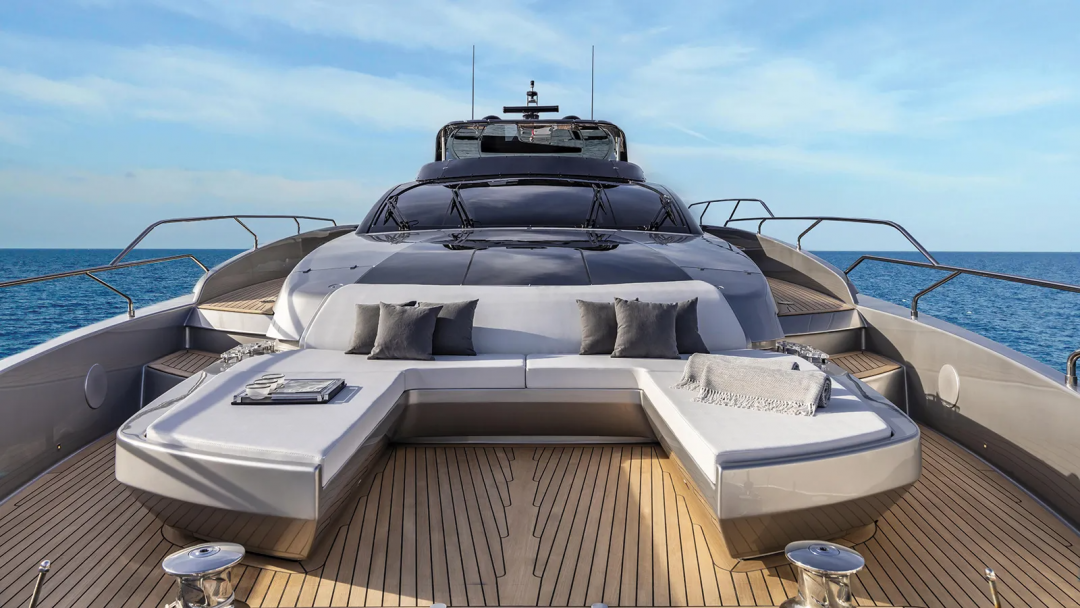
The views from the top
The statement from Beretta is, “We believe we achieved a very good balance between the spaces and the style.” “In terms of experience, the 90 came after the 100 [Corsaro] and 110 [Dolcevita]. We were able to incorporate all of the compliments and features found for the two previous models, which was helpful for this job. For us, this experience was quite beneficial. Many characteristics, including the bar and its big windows, are successfully scaled down. The shipyard has dubbed the look the “crystal palace,” which is a chamber encircled by glass, a daunting engineering challenge. The virtually totally glass rear part of the saloon lacks any significant supports or columns to obstruct the view. The goal is to grant access to infinity.
The shipyard built a steel framework to accommodate the significant amount of glass on the bigger Dolcevita. The shipyard used a carbon fiber frame on the Argo, but the outcome is same and quite amazing. It is “a spacious lounge that spans nearly 40 square meters and attains heights of over 2.1 meters,” according to de Vivo. Low-lying furniture divides it into a dining room and a seating section. On the other side of the galley, there is a corridor that leads to the private owner’s suite behind a sturdy door.
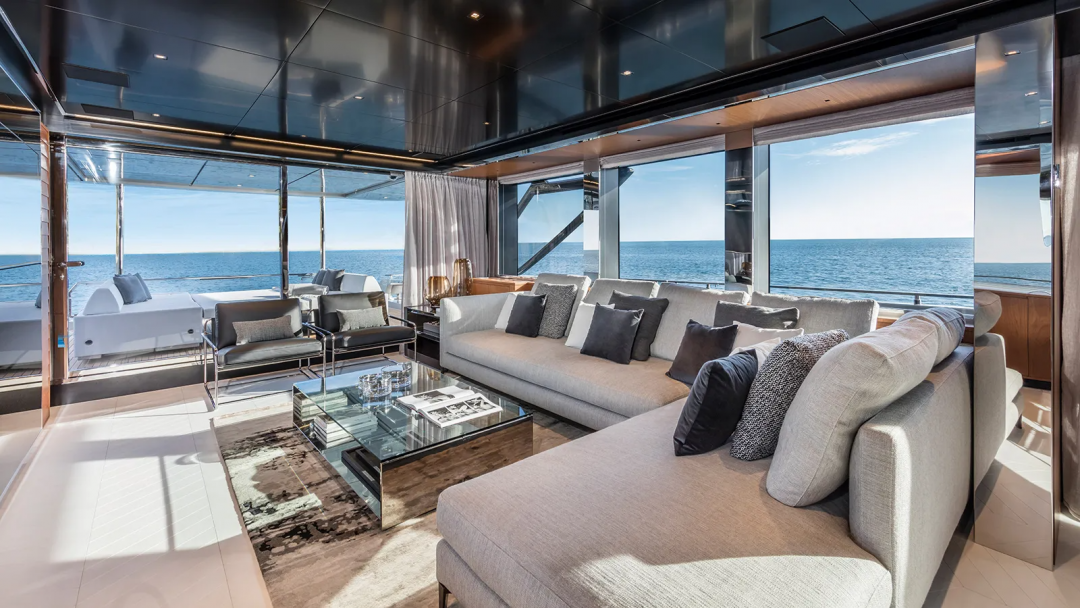
The “crystal palace”-nicknamed the main saloon has a dark lacquered ceiling for contrast
Riva staged the global debut of the first Argo, which had been built at the shipyard it controlled in La Spezia, in Florida, first in Miami and subsequently in Palm Beach. A bar is positioned just outside the saloon doors on the main deck. “I think in this area of the world [North America], people like to entertain a lot more with bars outside,” de Vivo adds. “It’s just that they have a different culture.” As part of the package, it includes two sofas and a coffee table designed by Paola Lenti.
Officina Italiana Design, on the other hand, has kept all of the deck furnishings on the European version at a relatively low level. A pair of sofas set on either side of a high-low table that can divide into two independent halves do not hinder the view from inside in any way. Depending on their particular preferences, the owners can choose any layout.
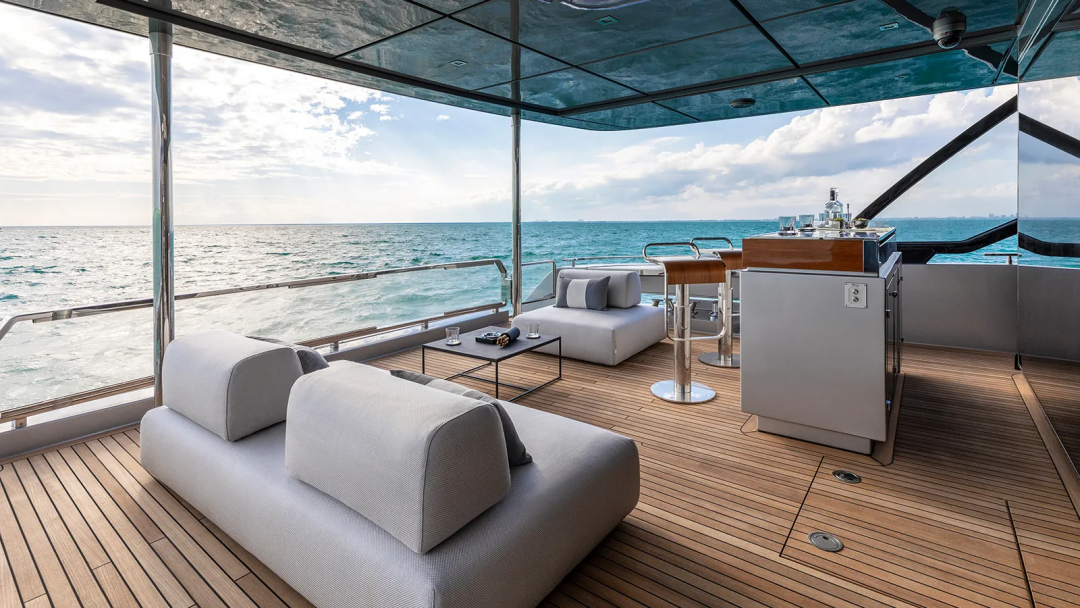
For outdoor entertaining, the ‘American’ version of the aft deck incorporates a wet bar
One of the design problems of the Argo was to make a shorter boat with a full body forward appear as streamlined as was practical. The black glass bands give the boat a thinner appearance throughout the day when the sun reflects off the surface. When the inside lights are on at night, the look is noticeably different and it is easy to see how much glass there is. The panes would cover an area larger than 80 square meters if laid end to end. The identical boat appears larger when light is coming in through the windows simply because the brain perceives the surfaces differently in different lighting conditions.
The way that Micheli approaches design is instinctive and intuitive, and he views each project as a whole, without any awkward angles, much like a sculpture. Only faint lines can be seen while looking back from the Argo’s bow at the hardtop and the flybridge, which is painted black. He asserts that the appearance, and more specifically “the surface,” is affected by car design. When viewed from this position, the boat, which can reach 30 knots with the larger engine option (MTU 16V 2000 M96), has the stance of a sports car.
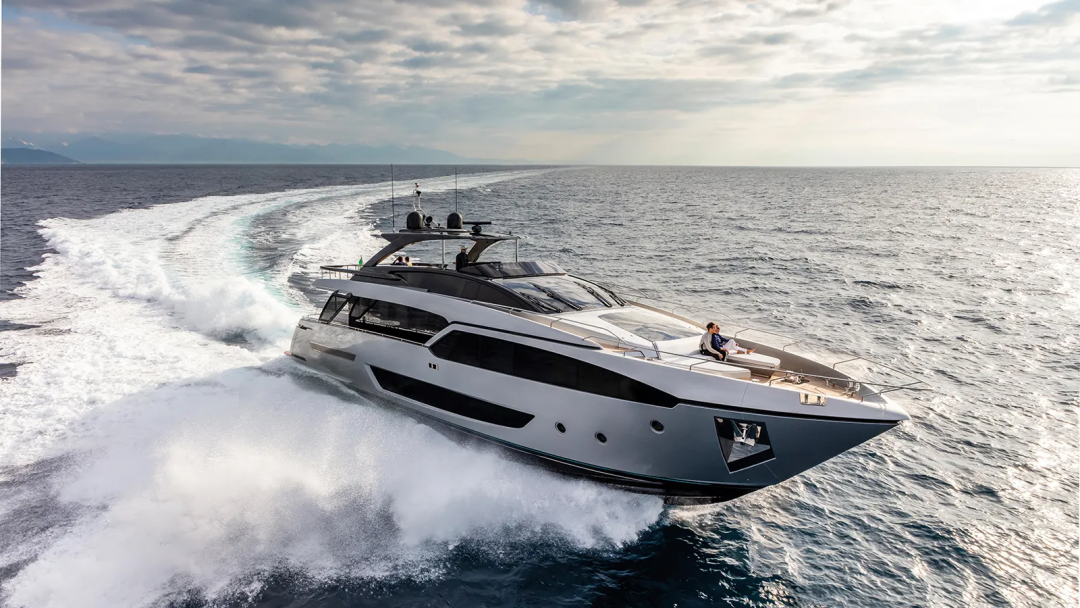
The Riva Argo 90’s exterior features elegant lines
Officina Italiana Design has been a part of the Riva story for over 25 years. The 13-meter Rivarama 44, a rakish dayboat with one stateroom, was one of the firm’s first larger yachts for Riva. Beretta says that the technical section of the builder did not fully grasp the notion at the time. He claims that they believed it was crazy to design a 13-meter yacht with only one compartment, yet they sold 130 of them in ten years.
Because of this reasoning, the design studio has been able to keep a significant lot of creative freedom in its cooperation with Riva. “We owe the shipyard a debt of gratitude.” They constantly try to make what we create; we are lucky in this sense. Some designers we know would like to be more imaginative, but they are constrained by what the yard can and will produce,” Beretta explains. Riva’s genetic constitution is infused with their creative ethos.
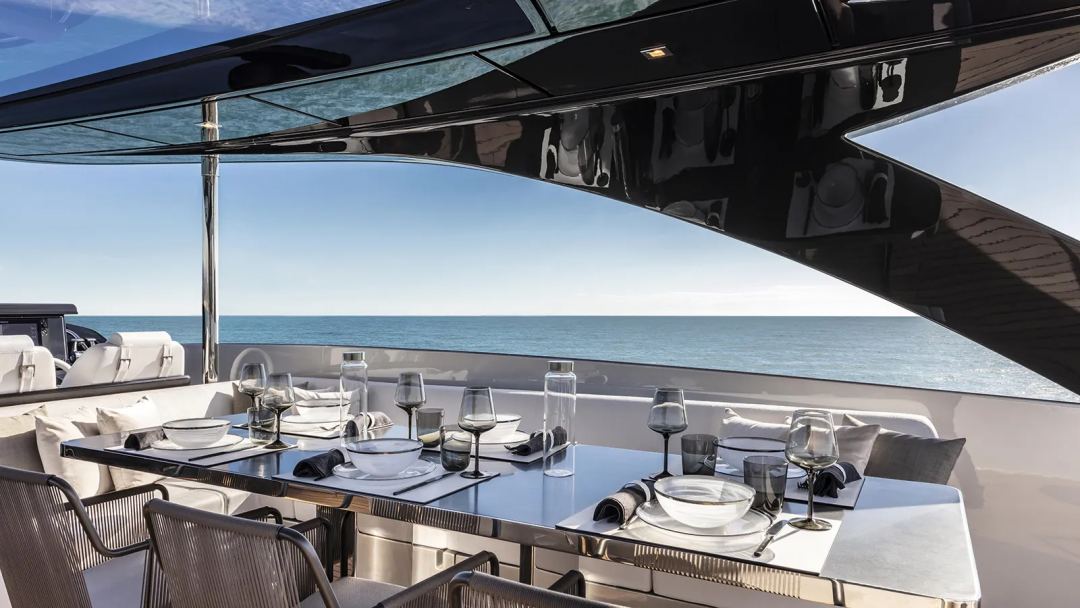
From the foredeck lounge, the 46 m2 flybridge is scarcely visible
“Good design must be durable as a sign of respect for our work as well as our consumers. They do not merit a vessel that will be out of style within two years. Because you cannot exist in the past, we are classical, albeit with a contemporary twist.”
The interior is also affected by this mindset. Officina Italiana Design works closely with the yard’s interior design division to produce enduring interiors in terms of all material, color, and furniture choices.
They have a lot of go-to, Italian-brand favorites even if they haven’t yet created their own furniture. One of them is Minotti, although they like diversity. Another preferred furniture manufacturer is Acerbis, a small business in Bergamo that is close to their place of living.
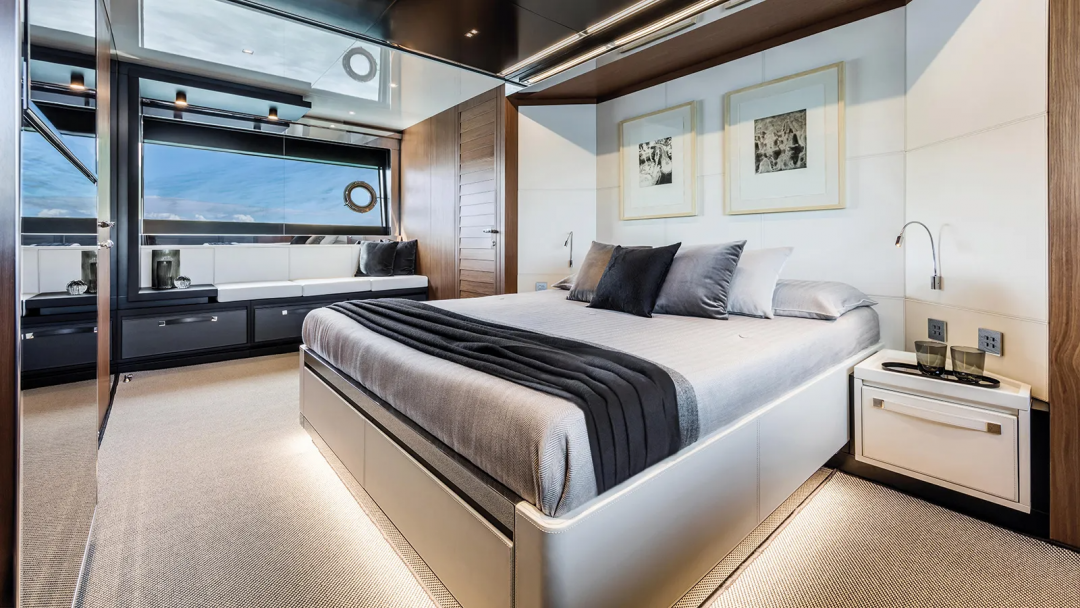
The full-beam suite on the lower deck is the most secure location on board
“The basic materials we use for all Rivas are wood, leather, and stainless steel because we believe they are a part of the history,” Beretta says. Then, new materials are added, as no one desires to remain in the past. On the Argo, stainless steel is widely employed in strategic ways that visually expand space and reflect light. The ceilings and bulkheads are dark lacquer and English walnut, respectively.
“Because this boat is so light, we decided on a darker interior, which provides comfort,” says Micheli. In the bathroom, white leather with stitched borders and Calacatta marble temper the darker hues.
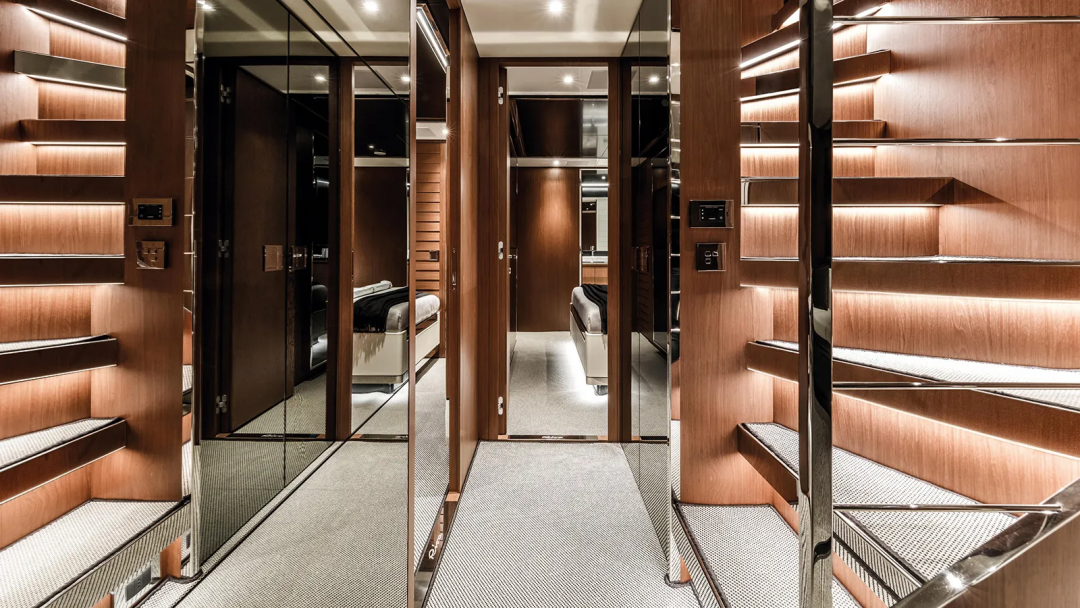
The walnut bulkheads on the lower deck provide visual comfort in the interior’s light environment
The Argo, considered a stepping stone to the superyacht-size yachts Riva now makes, includes two crew quarters and a tiny mess linked to the galley on the main deck. Despite their resemblance, the Argo should not be mistaken for a tiny Dolcevita or Corsaro. The hull is a new design created for this project, and the Argo has been thoroughly thought out.
The shipyard chose only three guest cabins. Amidships has a very big suite that compares favorably to the 30-square-meter suite on the main deck. “Some owners prefer sleeping up top, while others prefer sleeping down below.” So we’re offering them the best of both worlds with two master suites and two en-suite accommodations,” de Vivo explains.
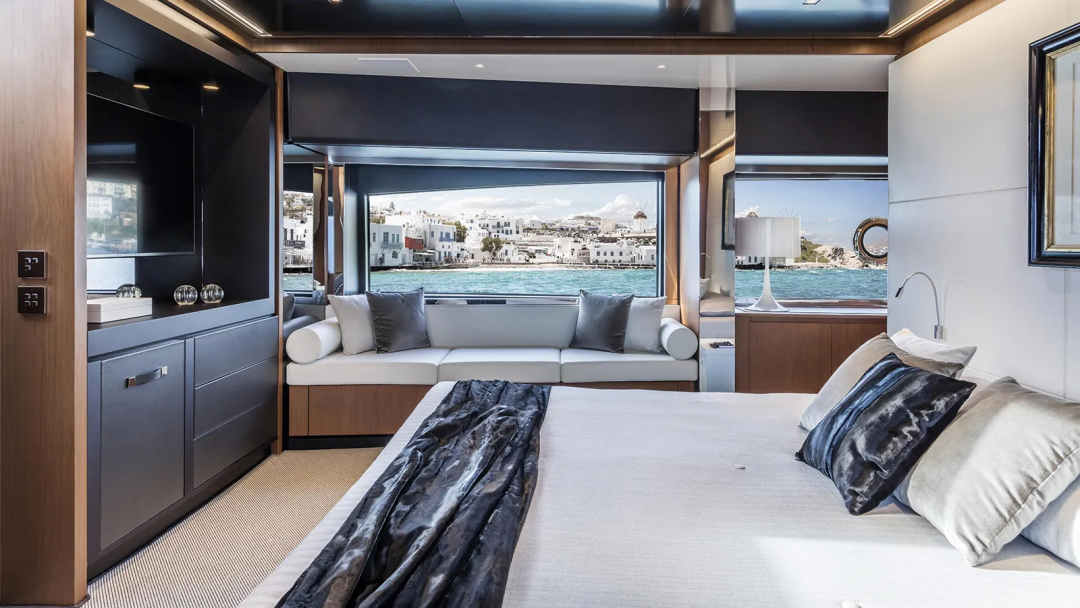
On board the Riva 90 Argo, the owner’s suite
The Argo has a fantastic flow as well. The spaces’ interconnectedness is a very great aspect. For instance, the bow section, which is simply furnished with a sofa in the form of a C, is accessible straight from the flybridge. “In [the US], people use this area a lot more,” says de Vivo.
The yacht’s flybridge is one of its best features. Just across from the dining table, the automated bar top opens at the push of a button to reveal an outdoor galley. The excellent seats that face the console, though, might be the pièce de résistance. They offer spectacular views over the bow and the impression of flying at a higher speed since they are perched atop a sculptured pedestal with a stainless-steel finish. So, certainly, there are good reasons to view the Argo from any angle, including the top.
